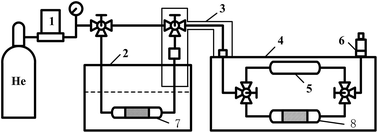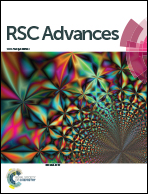Performance of mesoporous silicas (MCM-41 and SBA-15) and carbon (CMK-3) in the removal of gas-phase naphthalene: adsorption capacity, rate and regenerability†
Abstract
The adsorption isotherms of naphthalene on three typical mesoporous adsorbents, mesosilicas MCM-41 and SBA-15, and mesocarbon CMK-3 were determined by column tests at 125 °C, with feed concentrations ranging from 7.63 × 10−5 to 4.64 × 10−2 mol m−3 (1.88 to 1140 ppm). The Langmuir model and constant-pattern wave propagation model were found to well fit the isotherms and the breakthrough curves, respectively. Regenerabilities of the mesoporous samples and a benchmark activated carbon (AC) were characterized based on thermogravimetric analysis (TGA). The results show mesoporosity significantly reduced the internal mass-transfer resistance, contributing to facile desorption and to fast adsorption kinetics shown by high overall mass-transfer rate coefficient following the order of: CMK-3 > SBA-15 > MCM-41. Micropore–mesopore coexisting structures present in CMK-3 and SBA-15 facilitated the adsorption at very low concentrations due to micropore-filling, while greater surface hydrophobicity and micropore abundance on CMK-3 exhibited larger affinity for nonpolar naphthalene, rendering the highest adsorption capacity (1.014 mol m−3) among all sorbents including ACs. SBA-15 showed higher regenerability with a desorption temperature below 440 K, owing to the weaker binding and diffusion advantages contributed by the interconnectivity between primary mesopores.


 Please wait while we load your content...
Please wait while we load your content...